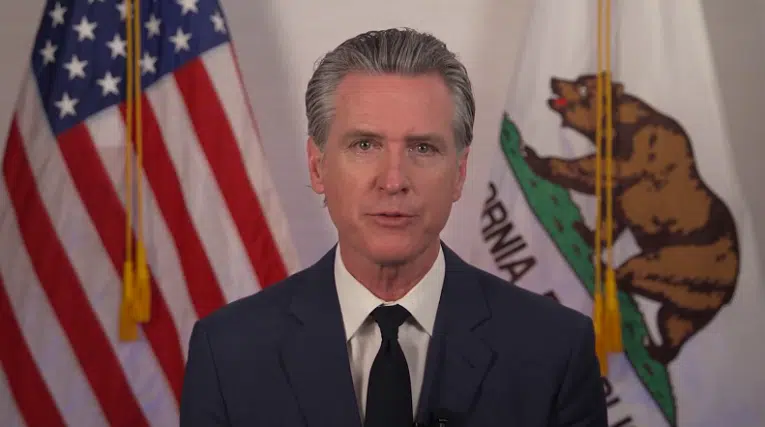Thanks to 2020 changes to federal law and regulations during the Covid pandemic not to disenroll Medicaid patients who no longer qualified for the program during the Department of Health and Human Services’ (HHS) public health emergency which began in March 2020, Medicaid enrollment has skyrocketed by 20.2 million to more than 91 million since Feb. 2020, according to the latest data from the Centers for Medicare and Medicaid Services (CMS) compiled by the Kaiser Family Foundation.
That was more than the entire period of expanded enrollment from 2010 through all of 2019, when the number went from 56 million before the Affordable Care Act was passed, to 71 million in 2019. It had reached 75 million in 2016, but continued decreases of the unemployment rate during the Trump years drove down eligibility.
And then in 2020, suddenly 25 million jobs were lost, unemployment claims soared, and suddenly, millions of Americans who had no income suddenly qualified for Medicaid. Without any change to the law, that would have been true, but to nail it down, Congress enacted a law, the Families First Coronavirus Response Act, that prohibited states from disenrolling Medicaid patients when they no longer qualify on the basis of income, so-called “continuous enrollment”.
Naturally, in the middle of a national emergency, it passed with veto-proof majorities in Congress without much debate, and certainly with little to no discussion about how this would expand the program. I doubt very many members read through or understood the implications of the provisions.
Every year, under traditional Medicaid, patients are supposed to be reevaluated on the basis of income to see if they still qualify, requiring financial documentation to keep receiving the benefit. But under Covid that stopped happening.
By the end of 2020, more than 16 million of the 25 million Americans who had lost their jobs had already returned to work, but between Feb. 2020 and Sept. 2020, 10 million were on continued unemployment claims and yet Medicaid rolls had swollen by 10 million that year, a process that would continue through 2021 and 2022 via churning in the U.S. labor force when Americans would temporarily lose their jobs and get Covid or get Covid and lose their jobs, go to the hospital and, lacking insurance, be automatically enrolled in Medicaid.
As a result, thanks to continuous enrollment, these recipients—and their families—were never removed from the Medicaid rolls even after they got their jobs back, driving the number up 20.2 million to 91 million today. More people got added to Medicaid under Covid than after a full decade under the Affordable Care Act.
One of the mechanisms for the expansion was automatic enrollment into Medicaid by hospitals for patients who lacked health insurance. As millions of patients were contracting Covid, many of them would go to hospitals for care and, lacking insurance, were pushed into Medicaid. In 2020 alone, there were 20 million cases, according to data compiled by the Institutes for Health Metrics and Evaluation. Not everyone went to the hospital for care, but those that did and, importantly, were temporarily out of work were enrolled in Medicaid.
The largest increases came from California (2.3 million), Texas (1.5 million), New York (1.3 million) and Florida (1.2 million).
Now, Congress has lifted the prohibition for states to begin disenrollments again in the year-end omnibus spending bill that just passed, beginning March 31.
Here’s the strange part. For the past three years, I cannot find a single statement by House or Senate Republicans specifically about the continuous enrollment provision. There was a House Republican Oversight Committee letter about potential improper payments to Medicaid during Covid in Aug. 2021, but with no mention of the program’s expansion. By then, the program had already expanded by 13 million.
There were a few opeds in the Wall Street Journal about the expansion of the program but not until in mid-to-late 2022, and only a few hard news pieces by the paper in late 2022 when Congress was said to be ending the provision. Fox News had no national reports on the topic but I could identify a single oped mid-2020 that warned about “continuous coverage” and the costs involved. There are likely more not turning up in search results, but you get the point.
What’s strange about this is Republicans have been railing against socialized medicine for more than 50 years and fought Medicaid expansion under the Affordable Care Act, and this was one of the largest expansions of government-run health care in the country’s history. Seems like it might have been an important issue to talk about in 2022, especially as it related to the Covid emergency.
Did they even know about it? If they didn’t, it will be because Republicans lack representation in these institutions, and so nobody would have been there to raise the alarm. Or worse, did they know about it, and not say anything for fear of upsetting a massive potential voting bloc? Questions should be asked by conservative news outlets, to the extent they are at all capable of introspection on their side of the aisle.
This is an institutional reporting failure but you had to know to look for it. I missed it, too, and only caught it when my wife who works at a managed care organization told me about the disenrollments beginning this year.
Leaving aside the apparent lack of bipartisan Congressional input or even public input and comment into this massive expansion of government-run health care, overall this appears to explain the crude impacts of the prolonged economic lockdowns by states, which kept people out of the labor force much longer than was expected or was necessary, keeping children and adults locked in their homes so Democrats could achieve universal health insurance.
But the outcomes could not have been good, either. For every perfectly healthy working age adult who was enrolled in Medicaid, the system had to keep track of them as well as those needy and with special conditions, the developmentally disabled, the elderly — who were left waiting in line for evaluations and assessments. Labor turnover in the health profession has been abysmal and, anecdotally, federal workers unions have complained of being overworked. Now we know why.
Even the disenrollment, which the Department of Health and Human Services says could impact 15 million Americans, will tax the system, as every patient will have be reevaluated on the basis of income. Instead of dealing with real patients, the system will be tracking people down, who in turn will have a perverse incentive to conceal income and finances.
The 11 million plus job openings after Covid? Now we know why. With Medicaid coverage, many Americans who were put into the program might have been unaware of the continuous coverage provisions and either opted not to go back to work or did so off the books to retain the benefit long term — a perverse incentive. The amount of fraud that will be prevalent in the disenrollment alone will be gargantuan, all the while those elderly or infirmed who actually need the system will be left with lackluster care.
Hospitals were overwhelmed by Covid intake and also a lack of private insurance to pay for the costs, and then in turn dumped more than 20 million people into socialized medicine, drowning the bureaucracy and the public health system that was never supposed to administer to the healthy. President Joe Biden used this situation to prolong the national and public health emergencies indefinitely. Why wasn’t Congress raising the alarm bells?
Robert Romano is the Vice President of Public Policy at Americans for Limited Government.







